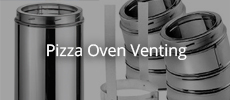The weather today was perfect, given it‘s coming into winter. 17C max, blue sky and sunshine the whole day. WIth some afternoon rain forecast for tomorrow, and a cold change in about a weeks time, I was out at 8.30am mixing v-p-crete to put the final layer. I did find my ph/moisture probe and tested the v-p-crete 3-4 days ago, and it was dry, or so the probe said. But I decided to wait a week before proceeding to be sure.
I‘m trying to find a balance with completing what I can while the weather is still allowing it, and pondering delaying work until next year if the weather doesn‘t allow me to finish.
With the final layer of v-p-crete insulation completed, I‘ll leave it for a week to dry before re-assessing my next steps.
I‘ve been researching double walled stainless steel flue, and what parts I need to extend the flue from the chimney through the new roof when its on. I‘ll order it tomorrow or rather next day. I need to consult with a chimney sweep, as its required by law in Germany that all flues that go through a roof are cleaned and maintained by a registered chimney sweep.
I want to start my drying fires soon, now the final layer of v-p-crete is on. The weather is getting colder next week, with max: 9-10C, min: 2-6C. I wont be able to rely on sunshine or warm days, although keeping fingers crossed some might still come.
I do have a question regarding the drying fires. Is it better to do them before adding the final render? With the weather, I need to know this to plan on whether to delay or wait for a day warm enough for it to set.





 . I covered the oven with tarps last night as the render over the concrete brickwork was drying much slower than that over the old recycled clay bricks. This morning its stiffened up nicely, as it stayed reasonably a warm 12C overnight.
. I covered the oven with tarps last night as the render over the concrete brickwork was drying much slower than that over the old recycled clay bricks. This morning its stiffened up nicely, as it stayed reasonably a warm 12C overnight.
Leave a comment: